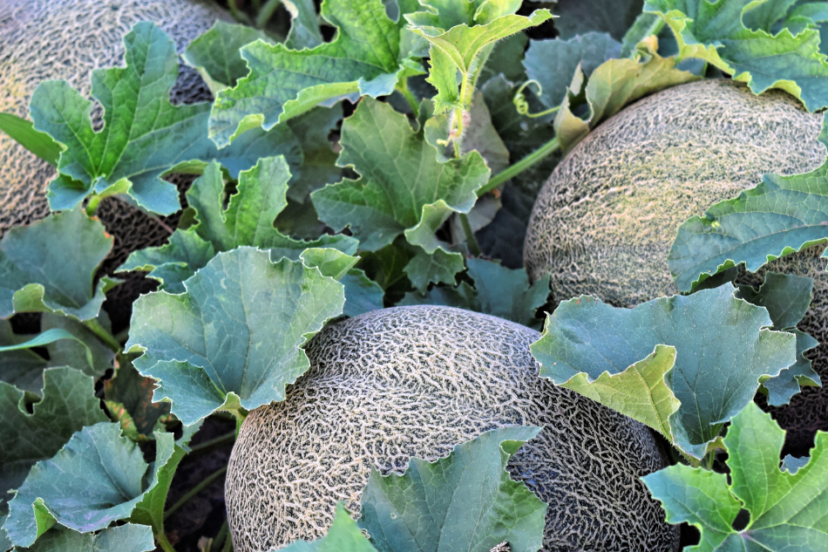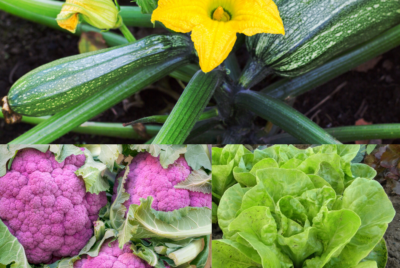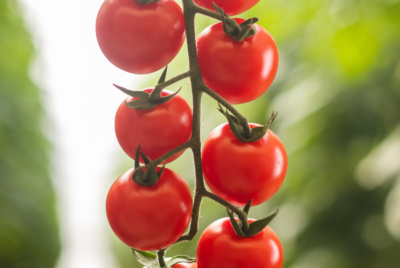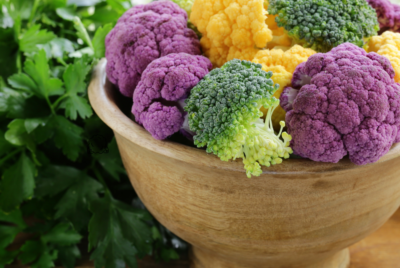Companion Planting with Cantaloupe

Introduction to Companion Planting with Cantaloupe
As a gardening lover, I’m always excited to share insights about one of my favorite practices: companion planting. Today, let’s dive into the world of companion planting specifically with cantaloupe, a delightful and rewarding fruit to grow.
1.What is Companion Planting?
Companion planting is a bit like matchmaking but in the garden.
It’s the practice of planting different crops in proximity for a variety of benefits. These benefits range from pest control and improved pollination to better use of space and enhanced growth rates.
The idea is that certain plants can positively influence each other when grown together.
The concept is rooted in agricultural tradition and has been practiced for centuries across various cultures.
It’s a natural approach to gardening, where you use the synergies between different plants to create a thriving, healthy garden ecosystem.
2.Why Choose Cantaloupe for Companion Planting?
Now, why talk specifically about cantaloupe? Well, cantaloupes aren’t just tasty; they are fascinating plants to grow in a companion planting setup. These sprawling vine plants, known scientifically as Cucumis melo, can greatly benefit from being planted next to the right companions.
Firstly, cantaloupes are relatively demanding in terms of soil nutrients and space. They thrive in rich, well-draining soil and need plenty of sunlight. By choosing the right companion plants, you can ensure that these needs are met without over-taxing your garden’s resources.
Additionally, cantaloupes are susceptible to a range of pests and diseases. Companion plants can help deter these pests naturally and reduce the need for chemical pesticides. For example, certain flowers and herbs act as natural pest repellents, while others attract beneficial insects that prey on common garden pests.
Another reason to choose cantaloupe for companion planting is its impact on soil health. Some companion plants, like legumes, can fix nitrogen in the soil, which is beneficial for cantaloupes as they are heavy feeders.
Lastly, the cantaloupe’s sprawling nature means it can cover a lot of ground, potentially shading out weeds. When strategically planted, they can be both beneficiary and benefactor in a companion planting arrangement.
So, whether you’re a seasoned gardener or just starting out, incorporating cantaloupe into your companion planting strategy can be a rewarding and fruitful endeavor. In the following sections, we’ll explore the best companions for cantaloupe, tips for planting and care, and much more. Stay tuned!
II. Benefits of Companion Planting
Embarking on a gardening journey with companion planting, especially with a focus on cantaloupes, unveils a plethora of benefits. It’s like each plant in your garden has a role to play, contributing to a harmonious and productive environment. Let’s delve into some of the key advantages of this approach.

1.Enhancing Growth and Flavor
One of the most exciting aspects of companion planting is its ability to enhance the growth and flavor of your garden produce. It’s quite fascinating how the right plant pairings can have such a significant impact. For cantaloupes, having companions like flowers and herbs can lead to sweeter, juicier fruits.
The science behind this involves various factors. Some plants can improve light distribution or provide ground cover, leading to more favorable growing conditions. Others may secrete growth-stimulating substances into the soil or air, which can positively affect nearby plants, including cantaloupes.
2.Natural Pest Control
Pest control is a crucial aspect of gardening, and companion planting offers a natural and eco-friendly approach. With the right plant companions, you can significantly reduce the need for chemical pesticides, which is not only better for the environment but also for the health of your garden and its produce.
Certain plants act as natural repellents for common pests that target cantaloupes. For instance, marigolds emit a scent that deters nematodes and other insects, while nasturtiums can lure aphids away. This method of pest control harnesses nature’s own mechanisms, creating a balanced ecosystem where pests are kept in check.
3.Improved Soil Health
Healthy soil is the foundation of a productive garden. Companion planting can play a vital role in maintaining and improving soil health. Different plants contribute differently to the soil ecosystem. Some, like legumes, fix nitrogen from the air into the soil, enriching it for nitrogen-loving plants like cantaloupes.
Moreover, a diverse planting scheme helps in maintaining soil structure and nutrient balance. The root systems of various plants interact differently with the soil, some breaking up hard soil and others helping to retain moisture. This diversity ensures that the soil remains fertile and well-aerated, providing ideal conditions for cantaloupes to flourish.
In conclusion, companion planting is more than just a gardening technique; it’s a way to create a vibrant, sustainable, and productive garden ecosystem. As we continue to explore companion planting with cantaloupes, you’ll discover the magic of having a garden where every plant plays a supportive role, leading to healthier plants, richer harvests, and a more enjoyable gardening experience.
III. Best Companion Plants for Cantaloupe
Discovering the best companion plants for cantaloupe is like finding the perfect neighbors for your garden. These companions not only coexist peacefully but also bring out the best in each other. Let’s explore a comprehensive list, focusing on flowers and herbs that make great companions for cantaloupe.

1.Flowers and Herbs
a. Marigolds
These vibrant flowers are more than just eye-catching. They help deter nematodes and other pests that can be harmful to cantaloupe.
b. Nasturtiums
Known for their bright, edible flowers, nasturtiums are excellent at attracting pollinators and repelling pests like aphids and beetles.
c. Mint
This aromatic herb is great for repelling pests, including ants and aphids. However, be mindful as it can be invasive.
d. Basil
Besides its culinary uses, basil helps repel mosquitoes and flies, and it’s said to improve the flavor of cantaloupe when planted nearby.

2.Additional Companions
a. Borage
Known for its beautiful blue flowers, borage is a great companion as it attracts pollinators and can deter pests. It’s also believed to improve the flavor and growth of cantaloupe.
b. Dill
Attracts beneficial insects like honeybees and butterflies, which are essential for pollination.
c. Chives
These have a mild deterrent effect on pests and can improve the flavor and growth of cantaloupe.
d. Lavender
Known for its soothing fragrance, lavender can help repel pests and attract pollinators.
Vegetable
Companion planting with certain vegetables can also benefit cantaloupe. Here are some vegetable companions:
a. Corn
Acts as a natural trellis for cantaloupe vines, saving space and providing shade for roots.
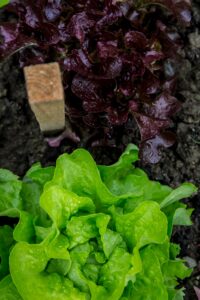
b. Radishes
Help repel pests and can be a quick harvest as they don’t compete with cantaloupe for long.
c. Lettuce
A good ground cover, lettuce can utilize the space under cantaloupe vines effectively.
d. Spinach
Similar to lettuce, spinach can grow well in the shade of cantaloupe plants.
e. Peas and Beans
These legumes fix nitrogen in the soil, enriching it for the nutrient-hungry cantaloupe.
Additional Tips for Companion Planting
When selecting companions for cantaloupe, consider their growth habits and requirements. It’s important to ensure that they don’t compete excessively for resources like sunlight, water, and nutrients. Also, be aware of the space requirements for cantaloupe vines, which can spread quite extensively.
In summary, choosing the right companion plants for cantaloupe can significantly enhance your garden’s health and yield. From pest control to pollination and soil health, these companions bring a variety of benefits while creating a more diverse and resilient garden ecosystem. Happy gardening!
IV. Plants to Avoid Near Cantaloupe
Just as important as finding the right companions for cantaloupe, it’s crucial to be aware of plants that should be avoided. These incompatible plants can cause more harm than good when planted close to cantaloupes, affecting their growth and health.
1.Incompatible Plants
Certain plants can negatively impact cantaloupe, either by competing for resources, attracting harmful pests, or through allelopathy, where one plant inhibits the growth of another through chemical means. Here’s a list of plants to keep at a distance from your cantaloupe:
a. Potatoes
They can attract blight and other diseases that might also affect cantaloupes.
b. Cucumbers
While they are relatives, cucumbers and cantaloupes can compete for space, water, and nutrients. More importantly, they can attract similar pests and diseases, thereby increasing the risk of infestation and spread.
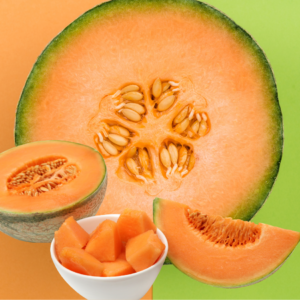
c. Melons (other types)
Similar to cucumbers, other types of melons can also compete with cantaloupes for the same resources and are susceptible to the same pests and diseases.
d. Squash and Pumpkins
These, too, are members of the Cucurbitaceae family and share many of the same pests and diseases as cantaloupes.
e. Zucchini
Being another member of the squash family, zucchini shares the same issues of competition and disease as squash and pumpkins.
2.Reasons for Incompatibility
Understanding why these plants are incompatible with cantaloupe can help you plan a more harmonious garden:
a. Resource Competition
Plants like cucumbers, squash, and pumpkins have similar nutrient, water, and space requirements as cantaloupes. When planted too close, they compete fiercely, often to the detriment of one or both species.
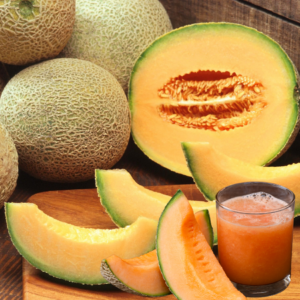
b. Disease and Pest Transmission
Plants from the same family often suffer from the same diseases and attract the same pests. By planting these together, you may inadvertently create a hotspot for disease and pests, which can quickly spread from one plant to another.
c. Allelopathy
Some plants can release chemicals from their roots or decaying leaves, which may inhibit the growth of nearby plants. While this is not specifically a problem with cantaloupes and the plants listed, it’s a general phenomenon to be aware of in companion planting.
In summary, while the concept of companion planting is largely about finding beneficial neighbors for your plants, it’s equally important to recognize and avoid pairing certain plants that could lead to detrimental effects. By understanding and avoiding these incompatibilities, you can ensure a healthier and more bountiful cantaloupe harvest.
V. Planting and Care Tips
Growing cantaloupes can be a rewarding experience, especially when you give them the right care and environment to thrive. Here, we’ll dive into some essential planting and care tips, focusing on spacing and layout, as well as watering and fertilization practices.
1.Spacing and Layout
Cantaloupes, being vine plants, require ample space to spread out. Proper spacing is crucial for healthy growth and fruit development.
a. Plant Spacing
When planting cantaloupe seeds or seedlings, ensure they are spaced about 36 to 42 inches apart. This spacing allows each plant enough room to grow and reduces competition for nutrients and water.
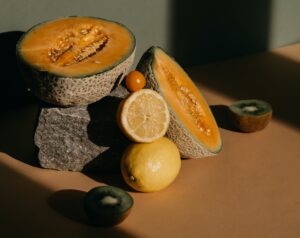
b. Row Spacing
If you’re planting multiple rows of cantaloupes, maintain a distance of about 60 to 72 inches between rows. This spacing is important for air circulation and ease of access for maintenance and harvesting.
c. Trellising
Consider using trellises for your cantaloupe vines. Trellising helps save space, keeps fruits off the ground (reducing the risk of rot and disease), and makes it easier to monitor the health of the plant and fruits.
d. Companion Planting Layout
If incorporating companion plants, plan your layout carefully. Position companions so that they don’t overshadow or overcrowd the cantaloupes. Low-growing plants can be placed near the base of cantaloupes, while taller plants should be positioned where they won’t block sunlight.
2.Watering and Fertilization
Proper watering and fertilization are key to producing juicy and flavorful cantaloupes.
Watering Requirements
Cantaloupes need consistent moisture, especially during the germination and growing period. Water the plants deeply about once a week, providing 1 to 2 inches of water. However, avoid over-watering as it can lead to root rot.
a. Drip Irrigation
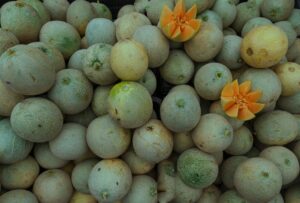
Consider using a drip irrigation system. This method helps deliver water directly to the roots, minimizing water wastage and preventing the leaves from getting too wet, which can lead to fungal diseases.
b. Soil Fertility
Before planting, enrich your soil with compost or well-rotted manure. This step will provide essential nutrients for your cantaloupe plants.
c. Fertilization
Once the plants start to grow, consider using a balanced fertilizer, like a 10-10-10 formula, every 4-6 weeks. However, when the plants begin to flower and set fruit, switch to a low-nitrogen, high-phosphorus, and potassium fertilizer to encourage fruit development.
d. Mulching
Apply mulch around your cantaloupe plants. Mulch helps retain soil moisture, keeps the soil temperature stable, and suppresses weed growth.
Remember, every garden is unique, so it might take some trial and error to find out exactly what works best in your specific conditions. Observing your plants and adjusting your care routine accordingly is key to a successful cantaloupe harvest. Happy gardening!
VI. Troubleshooting Common Issues
Growing cantaloupes can sometimes be challenging, as they are susceptible to certain pests and diseases. Being proactive in your garden management and knowing how to address these issues can make a big difference in the health and yield of your cantaloupe plants.
1.Pest Problems
Cantaloupes can attract various pests, which can hinder their growth and fruit quality. Here are some common pests and how to manage them:
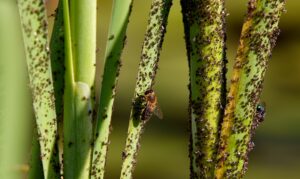
a. Aphids
These small, sap-sucking insects can weaken plants and spread diseases. Control them by spraying strong water jets to knock them off plants, using insecticidal soaps, or introducing natural predators like ladybugs.
b. Cucumber Beetles
These beetles not only eat the leaves but can also transmit bacterial wilt. Use floating row covers to protect young plants, and remove any weeds that could harbor them. Pesticides may be necessary in severe cases.
c. Squash Bugs
These bugs can cause significant damage to the leaves. Handpick them and destroy their eggs, which are usually found on the undersides of leaves. Insecticidal soaps or neem oil can also be effective.
d. Spider Mites

These tiny pests can cause leaf discoloration and defoliation. Increase humidity around the plants or use miticides if the infestation is severe.
2.Disease Management
Cantaloupes are also prone to certain diseases. Early identification and proper management are key to controlling these issues:
a. Powdery Mildew
This fungus appears as white, powdery spots on leaves. Improve air circulation, reduce leaf wetness, and use fungicides if necessary.
b. Downy Mildew
It causes yellow, angular spots on leaves. To manage, use fungicides and ensure good air circulation. Avoid overhead watering to reduce leaf wetness.
c. Bacterial Wilt
Spread by cucumber beetles, this disease causes sudden wilting of plants. Control the beetles and remove infected plants to prevent spread.
d. Fusarium Wilt
This soil-borne fungus causes yellowing and wilting of leaves. Use disease-resistant varieties and practice crop rotation to manage it.
3.General Tips for Pest and Disease Control
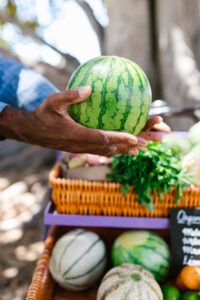
a. Monitor Regularly
Regularly inspect your plants for signs of pests and diseases. Early detection is crucial for effective management.
b. Good Hygiene
Keep your garden clean. Remove plant debris and weeds, as they can harbor pests and diseases.
c. Watering Practices
Water your plants at the base to avoid wetting the foliage, which can lead to fungal diseases.
d. Crop Rotation
Avoid planting cantaloupes or other cucurbits in the same spot year after year to reduce disease buildup in the soil.
By staying vigilant and adopting these practices, you can effectively manage most pest and disease problems in your cantaloupe garden, ensuring a healthy and bountiful harvest.
VII. Harvesting and Utilization
The joy of growing cantaloupes culminates in the harvest, where you get to enjoy the fruits of your labor, quite literally. Knowing when and how to harvest cantaloupes, and then using them in delightful recipes, can make your gardening experience even more rewarding.
1.When to Harvest Cantaloupe
Determining the perfect time to harvest cantaloupes is crucial for getting the best flavor and texture. Here are some indicators that a cantaloupe is ready to be picked:
a. Color Change
The skin of a ripe cantaloupe changes from green to a yellowish or creamy color.
b. Netting Pattern
The distinctive net-like texture on the melon’s skin becomes more pronounced and feels rough to the touch.
c. Fragrance
A ripe cantaloupe emits a sweet, musky aroma at the blossom end (opposite the stem).
d. Stem Separation
Ripe cantaloupes tend to detach easily from the vine. This is known as “slipping” and indicates the melon is ready. If it comes off with a gentle tug, it’s ripe.
e. Sound
Tap the melon gently. A ripe cantaloupe will have a dull, hollow sound.
f. Firmness
The blossom end should yield slightly to gentle pressure when ripe.
2.Using Cantaloupe in Recipes
Cantaloupe is not only delicious on its own but also a versatile ingredient in the kitchen. Here are some ideas for incorporating cantaloupe into various dishes:
a. Fresh Salads
Add cubed or balled cantaloupe to a salad for a sweet and refreshing twist. It pairs well with greens, feta or mozzarella cheese, and a balsamic glaze.
Smoothies and Juices
Blend cantaloupe with other fruits, yogurt, or juice for a refreshing drink. It’s particularly delicious with strawberries, mint, or a squeeze of lime.
b. Desserts

Use cantaloupe in sorbets, fruit tarts, or simply serve it fresh with a sprinkle of honey and mint.
c. Grilled Cantaloupe
For a unique flavor, try grilling cantaloupe slices. It caramelizes the sugars, offering a delightful taste.
d. Cantaloupe Soup
A chilled cantaloupe soup can be a perfect appetizer for summer meals.
e. Salsas and Sauces
Combine diced cantaloupe with herbs, spices, and other fruits like mango or tomato to create a unique salsa, perfect as a topping for grilled meats or fish.
Remember, when using cantaloupe in recipes, it’s best to use it fresh. As cantaloupe is a soft fruit, it doesn’t freeze well in its raw state but can be frozen when used in purees or jams.
Harvesting cantaloupe at the right time and using it in a variety of dishes can enhance your culinary experience, allowing you to savor the full spectrum of flavors this wonderful fruit has to offer. Enjoy your home-grown cantaloupes in these creative and tasty ways!
Conclusion
1.Summary of Key Points
As we reach the end of our exploration into the world of growing cantaloupes through companion planting, let’s recap the key points:
a. Companion Planting Benefits
We learned that companion planting with cantaloupe not only enhances growth and flavor but also provides natural pest control and improves soil health.
b. Ideal Companions
Flowers and herbs like marigolds, nasturtiums, mint, and basil are excellent companions, offering pest deterrents and other benefits. Vegetables such as corn, radishes, and beans also synergize well with cantaloupes.
c. Plants to Avoid
It’s important to steer clear of incompatible plants like potatoes, cucumbers, and other melons to prevent competition and disease spread.

d. Care Tips
We discussed essential care tips including proper spacing, watering, and fertilization to ensure healthy growth.
e. Troubleshooting Pests and Diseases
We identified common pests and diseases affecting cantaloupes and effective ways to manage them.
f. Harvesting and Utilization
We concluded with insights on when and how to harvest cantaloupes, along with creative ways to incorporate them into various dishes.
2.Encouragement for Gardeners
To all gardeners, whether you’re just beginning your journey or are a seasoned green thumb, growing cantaloupes can be an incredibly fulfilling endeavor. The process of nurturing these plants, from seed to fruit, is not just about the harvest but also about the learning and experiences along the way.
Companion planting with cantaloupes is a wonderful opportunity to engage more deeply with your garden. It’s about creating a mini-ecosystem where plants help each other thrive. This approach can open up new avenues of gardening practices that are environmentally friendly and sustainable.
Remember, gardening is a journey of discovery and experimentation. Each season brings its own challenges and rewards. Don’t be discouraged by setbacks; instead, see them as opportunities to learn and grow. Share your experiences with fellow gardeners, and continue to expand your knowledge and skills.
Enjoy the process, relish the harvest, and take pride in the knowledge that you are cultivating life and contributing to a healthier, greener world. Happy gardening!

FAQs
1: What are the best companions for cantaloupe in a vegetable garden?
Answer: The best companions for cantaloupe in a vegetable garden include corn, which acts as a natural trellis; legumes like beans and peas, which enrich the soil with nitrogen; and leafy greens such as lettuce and spinach, which efficiently use space under the cantaloupe vines. These companions help in nutrient sharing, pest control, and efficient utilization of garden space.
2: How much space do I need between cantaloupe plants?
Answer: You should space cantaloupe plants about 36 to 42 inches apart. This spacing gives each plant enough room to grow and access nutrients and water without excessive competition. If you’re planting multiple rows, maintain a distance of about 60 to 72 inches between the rows to ensure good air circulation and ease of access.
3: Can I grow cantaloupe and cucumbers together?
Answer: It’s generally not recommended to grow cantaloupe and cucumbers together. Despite being from the same family, they compete for the same nutrients and are susceptible to the same pests and diseases. This close proximity can increase the risk of pest infestations and disease spread.
4: What are some natural ways to control pests on cantaloupe plants?
Answer: Natural ways to control pests on cantaloupe plants include planting pest-repelling flowers like marigolds and nasturtiums nearby, using insecticidal soaps or neem oil for aphids and spider mites, and introducing beneficial insects like ladybugs. Additionally, practicing good garden hygiene, such as removing weeds and plant debris, can also help control pests.
5: How do I know when my cantaloupes are ready to harvest?
Answer: Cantaloupes are ready to harvest when their skin changes from green to a yellowish color, the netting pattern becomes more pronounced, they emit a sweet fragrance at the blossom end, and they detach easily from the vine. Additionally, the blossom end should yield slightly to gentle pressure, and the fruit should produce a dull, hollow sound when tapped gently.
Companion Planting Sweet Potatoes


